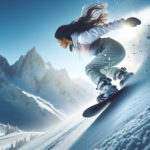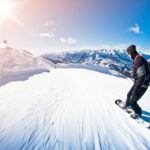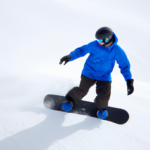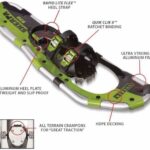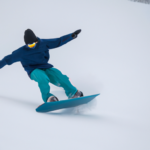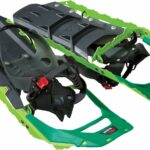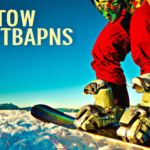Are you curious about how long it may take to learn snowboarding? Let’s explore the world of snowboarding and find out. This article offers insights into the time and factors involved in becoming a proficient snowboarder. From understanding the basics to honing advanced skills, this interesting journey looks different for everyone due to individual pacing and learning commitments. It’s not a race, so sit back, enjoy the ride, and let’s unlock what it really takes to learn snowboarding.
Understanding Snowboarding
Snowboarding, simply put, is a thrilling winter sport that involves descending a snow-covered slope while standing on a snowboard. The rider’s feet are securely strapped to this board, offering balance and control as they navigate the powdery incline. It’s an adrenaline-pumping activity that challenges and excites, providing you an escape into nature’s wilderness, and an opportunity to master a new skill.
What is snowboarding?
Snowboarding is an adventure sport that offers an exciting combination of speed, balance, and aerial maneuvers. It’s like surfing or skateboarding, but on snow-covered hills instead of waves or concrete. You don’t just ride down the hill with a snowboard; you carve turns, catch air, and sometimes perform tricks. It’s about mastering your body movements to wield control over your navigation and speed on the slippery slope.
History of snowboarding
Snowboarding has its roots in the 1960s in the United States, where pioneers fashioned primitive boards to surf on snow. The first model, called ‘Snurfer’, was basically a toy for kids. However, its popularity quickly caught on amongst adults too. Over the decades, snowboarding has seen considerable development, not only in terms of equipment and gear but also in being recognized as a legitimate sports discipline. It was included in the Winter Olympics in 1998.
Types of snowboarding styles
Your personal style in snowboarding depends largely on your skills, experience, and the terrain you prefer. Freestyle snowboarding involves performing tricks, jumps, and navigating boxes and rails in a snow park. Freeriding focuses more on speed and navigating off-piste, untouched terrains. Then there’s alpine snowboarding, which is more about speed and carving turns on groomed pistes.
Factors Affecting the Learning Curve
Learning to snowboard does not happen overnight—it’s a process. Several factors influence how quickly you can get the hang of it.
Personal physical fitness
Just like any other sport, physical fitness is crucial in snowboarding. Core strengths, balance, flexibility, and overall endurance play a significant role in how quickly you learn different skills in snowboarding.
Previous experience
If you have a background in sports like skateboarding, wakeboarding, or surfing, you might have a smoother transition into snowboarding. The core skills required in these sports, like balance and agility, are the same as those needed in snowboarding.
Accessibility to snowboard training resources
Regular access to mountains and snow can significantly enhance your snowboarding learning curve. The more you practice, the better you will become. Training resources like snow parks and indoor ski centers can also be highly beneficial.
Quality of training or instruction
Experienced trainers and high-quality coaching can greatly affect your learning speed and safety. They can provide personalized inputs and harness your strengths while working on your weaknesses.
Basic Skills in Snowboarding
First-timers should master the basics before moving on to more exciting stuff. Fortunately, the basic skills in snowboarding are pretty straightforward.
Balancing on the board
The first step is to learn how to balance yourself on the snowboard. This includes learning how to strap in and stand up on the board, on flat ground and eventually on a hill.
Gliding and sliding
Once you’ve nailed balancing, you move on to gliding and sliding. You’ll learn how to push off with one foot and slide straight down a gentle incline. This is a fundamental aspect of snowboarding, allowing you to control your speed and direction.
Turning and carving
Now is the time to plunge into turning and carving. These are techniques that enable you to change direction without losing control or coming to a complete stop.
Stopping
Learning to safely and effectively stop is a fundamental skill you must master. Falling leaf is a beginner stopping technique where you slide down the hill while going back and forth across the slope.
Advanced Skills in Snowboarding
These entail a whole different level of thrill and excitement.
Jumping and landing
Efficient jumping and successful smooth landings not only add style to your ride but also enable you to negotiate obstacles and perform tricks.
Tricks and stunts
Flips, spins, grabs, slides – there’s a whole gamut of tricks that you can perform with a snowboard.
Evaluating Progress in Snowboarding
Snowboarding is about progression.
Levels of comprehension and performance
As with any skill, your comprehension and performance in snowboarding gradually improve with practice and patience. Levels include beginner, intermediate, advanced, and expert.
The concept of ‘plateau’ in skill development
Progress isn’t always linear. Sometimes, you might feel your improvement stalled—this is referred to as hitting a ‘plateau.’ Overcoming it requires focused practice, innovative approaches, and consistent effort.
Snowboarding Equipment and Gear
Your equipment significantly contributes to your performance on a snowboard.
Selecting the right snowboard
There is no one-size-fits-all in snowboards. Your snowboard should fit your weight, height, skill level, and riding style.
Importance of appropriate and quality gear
Proper snowboarding gear like boots, bindings, helmet, goggles, and appropriate clothing are as important as a good snowboard. Quality gear enhances your safety and comfort on the slopes.
Maintenance of equipment
Regular maintenance of your snowboard and gear keeps them in good condition and enhances their lifespan.
Safety in Snowboarding
While snowboarding is exhilarating, it can pose risks.
Common injuries and risks
Sprains, fractures, bruising, and concussions are the most common snowboarding injuries. Avalanches pose significant risks in off-piste snowboarding.
Preventing injuries
Prevention involves taking precautionary measures like starters should always learn from certified professionals, using the right gear, staying within your skill level, and abiding by safety rules.
Essential safety gear
Helmets, wrist guards, and body armors are some crucial safety gear in snowboarding.
Snowboarding Etiquette and Rules
Snowboarding is fun, but it’s important to be courteous and respectful towards others on the slope.
Respect for other riders
Whether you’re on the chairlift, in line for the tow, or actually on the slope, remember—courtesy is king. Maintain a safe distance from other riders, and give way to those below you.
Understanding mountain rules
Every mountain has its specific rules regarding lifts, slopes, and trails. Make sure you familiarize yourself with these before starting your snowboarding adventure.
Snowboarding in designated areas
The ski fields are generally well-marked with areas designated for beginners, intermediates, and advanced riders. It’s crucial to stick to your designated area.
Benefits of Learning Snowboarding
Along with giving you an adrenaline rush, snowboarding offers some surprising benefits.
Physical and fitness benefits
Snowboarding is a full-body workout that improves your strength, balance, flexibility, and aerobic conditioning.
Well-being and mental health
The combination of physical exertion, focus, and the stunning beauty of snow-covered mountains makes snowboarding great for mental well-being. It helps reduce stress and improves mental health.
Confidence and self-esteem boost
Mastering this challenging sport gives you a massive confidence boost. Each time you conquer a new trick or navigate a difficult trail, your self-esteem is bound to get a lift.
Sustaining Interest and Motivation
Keeping yourself motivated on your journey in snowboarding is essential to ensure continuous progress and prevent burnout.
Setting realistic goals
Setting achievable goals gives you a sense of purpose and helps keep track of your progress. Remember, success isn’t always about performing the trendiest trick; it’s about moving forward from where you are.
Joining a snowboarding community
Joining a group of likeminded enthusiasts can offer support, motivation, and make the learning process more fun.
Keeping the fun in learning and improving
The whole point of snowboarding is to have fun. So, regardless of your skill level, strive to have a blast every time you hit the slopes. Happy snowboarding!
- What Snowboard Bindings Should I Get? - January 23, 2024
- What Size Screws For Snowboard Bindings? - January 23, 2024
- How To Snowmobile On Water? - January 23, 2024

